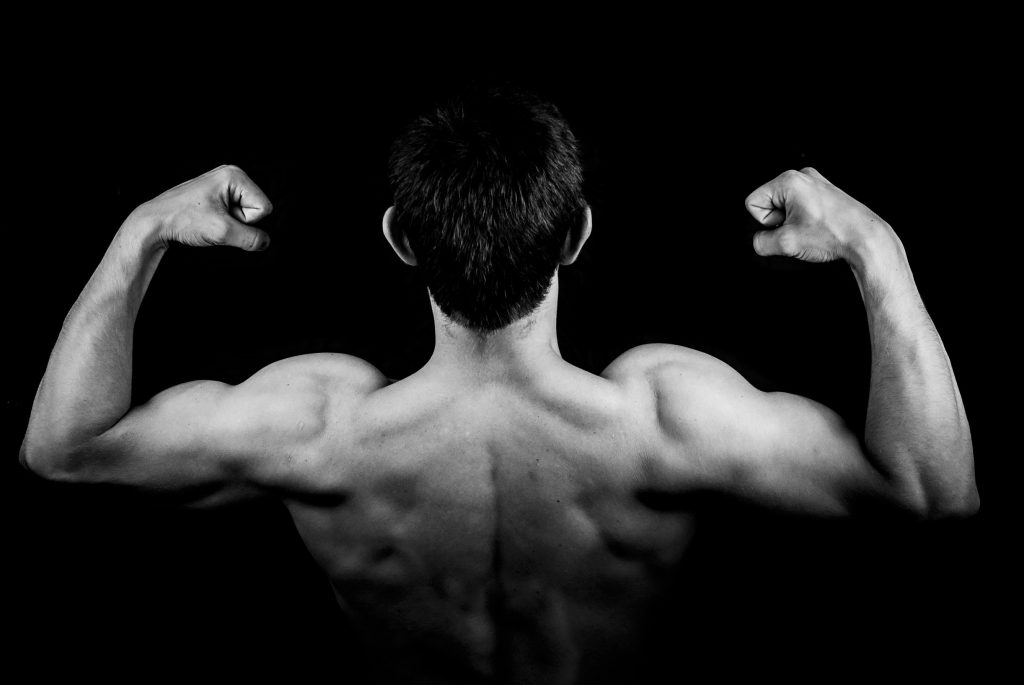Having a structured workout routine is not something to scoff at. However, according to the Centers for Disease Control and Prevention (CDC), only 23% of adults in the US meet the recommended amount of aerobic and muscle-strengthening activity each week.
Maintaining a routine can mean one thing, but how you structure that routine is key to seeing results. Many people don’t think much about which muscle groups to workout together, resulting in inefficient and less-than-optimal sessions.
How Many Muscles Are in the Human Body?

Around 600 muscles comprise the human body. It consists of five major muscle groups that function together to produce movement.
Chest Muscles
Primarily responsible for moving the arms, the chest muscle is one of the strongest in the body. Its main muscle, the pectoralis major, attaches the front of the shoulder to the breastbone. The pectoralis minor lies beneath it.
The pecs work together with individual muscles to power actions like arm wrestling, pushing open a door, or performing a chest press at the gym. That’s why a well-developed chest is so important. Without a strong chest muscle, it would be difficult to complete many everyday tasks.
Back Muscles
The back houses some of the biggest muscles in the body, including the latissimus dorsi (lats). Other large back muscles include the trapezius (traps), erector spinae, teres muscles, and rhomboids.
Since the back muscle is essential for posture and spine stability, a strong back is critical for strength and power athletes and those performing everyday activities.
The back muscles are also the most complex major muscular structure in the body, perfecting the harmony of multiple muscles working together.
Arm and Shoulder Muscles
There are three main groups of muscles in the shoulder: the anterior (front), lateral (side), and posterior (rear).
The deltoid is the muscle most people think of when they think of the shoulder. However, it only covers the shoulder joint. The rotator cuff muscles are located underneath the deltoid and attach the humerus (upper arm bone) to the shoulder blades.
Many know that working out the arms is a must for developing upper-body strength, but what many people don’t realize is that the shoulders play a big part in arm movement. These muscles lift the arm up and out to the side.
Abdominal Muscles
For many people, the abdominals are the most sought-after muscles. The abs are essential in twisting motions, such as a golf swing or looking behind yourself. They also play a crucial part in bending over movements and maintaining good posture.
There are four main abdominal muscles: the rectus abdominis, external obliques, internal obliques, and transverse abdominis. The rectus abdominis is the muscle that makes up the “six-pack.”
Leg Muscles
The legs consist of some of the body’s biggest and most powerful muscles, including the quadriceps (quads), hamstring muscles, glutes, and calves.
These muscles work together to power movements like sprinting, squatting, and jumping.
Without strong leg muscles, performing many daily activities, such as walking upstairs or standing up from a chair, would be difficult.
Should You Workout All Parts of the Same Muscle on the Same Day?

Each muscle group is integral to human function, so when a person works out, it’s crucial to target certain muscle groups for a well-rounded routine.
But that doesn’t necessarily mean you should work out all major muscle group parts on the same day. Finding balance in your routine is key to developing all areas equally.
To make the most of your gym time, you want to structure your routine in a way that allows you to hit as many smaller muscle groups as possible – while still giving each muscle the attention it needs to recover properly.
Which Muscle Groups Should I Workout on the Same Day?
What muscle groups to work out together depends on your fitness goals, as there are countless ways to structure a workout routine. But here are some basic guidelines for which major muscle groups should be trained together:
The chest, shoulders, and triceps
Your push muscle groups are the muscles that you use in a push resistance training exercise. Because this one muscle group works together in many compound exercises, it’s efficient to train them on the same day.
The back and biceps
The back and biceps are the pull muscle groups. These are the muscles that you use to pull resistance towards your body. Like the push muscle group, the back and biceps work together in many pulling movements, so it’s efficient to train them together.
The quads, hamstrings, glutes, and calves
“Leg day” is one of the most dreadful days in a gym-goer’s week. The reason it’s one of the most dreaded activities is that the leg muscle group involves huge muscles that require a lot of work to train correctly.
This is why it’s common to see people split up their leg workouts, training the quads one day and the hamstrings, glutes and calf muscles. Essentially, an exercise routine that hits all the leg muscles in one day is the ideal choice.
The abs or core muscles
The muscle mass of the abdominals, or core, works together to stabilize the spine and pelvis. These major muscles are essential for balance, posture, and, most importantly, preventing injuries.
Many exercises combine the abs with other upper body muscle groups, so you don’t need to dedicate a particular day or workout to training them.
What Muscles Should Workout at the Same Time?
According to the American Heart Association (AHA), you should exercise each group twice per week, allowing for a minimum of 2 days of rest between workouts.
You could work out your arms and shoulders one day, followed by legs and abs the next. Or, you could do a full-body workout two days a row, followed by a day of rest.
Pairing different groups together is an effective way to ensure you get a well-rounded workout. But ultimately, the best way to figure out what muscle group you should workout together is to experiment and see what works best for you. There’s no one-size-fits-all answer, so find what works and stick with it.
Sample Exercises for Beginners
If you’re just starting, it’s ideal for keeping your workouts simple. That way, you can perform exercises in proper form and technique without overloading your body. Here are some examples of beginner routines that combine muscle groups:
Chest press – works the chest, shoulders, and triceps
Seated row – works the back and biceps
Squat – works the quads, hamstrings, glutes, and calves
Rack pull – works the back and biceps
Push-up – works the chest, shoulders, triceps, and abs or core
Bench press – works the chest, shoulders, and triceps
Sports for Targeting Specific Muscles
Since some gyms are still closed due to health protocols, you may have to get creative with how you work out. One excellent way to do that is by playing sports. Pandemic sports have become increasingly popular, allowing you to get a productive workout while staying socially distant. And the best part is that different sports target different muscle groups. So if you’re looking to focus on a particular area, playing a sport is an excellent way to do it.
For example, water sports are an excellent way to work your arms, shoulders, and core (abs and lower back). Running is perfect for legs and cardio fitness while biking targets the legs and glutes. There are many options, so take your pick and have fun while you stay fit. The most important thing is to find the best sport for you and your fitness goals.
Remember, there’s no one-size-fits-all answer to working out. What matters is finding what works best for you and sticking with it. So go out there, experiment, and have fun while you stay fit and healthy.


